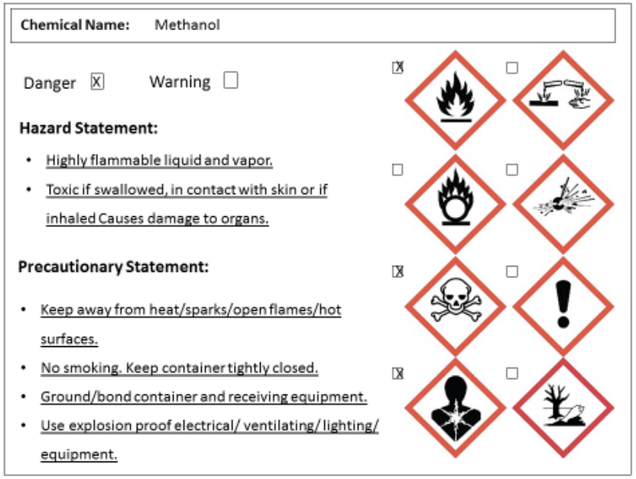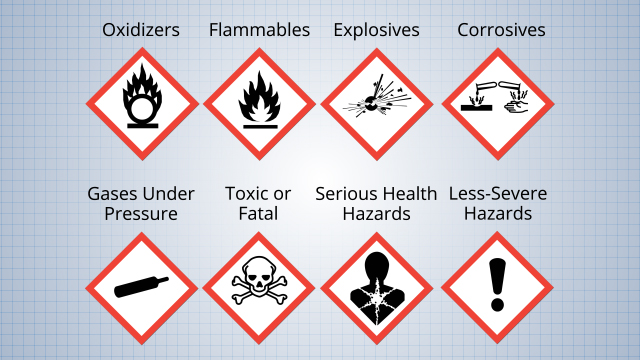OSHA has established rules to ensure that chemical risk communication is part of corporate health and safety programs. An important component of these rules is compliance with the hazard label. OSHA 29 CFR 1910.1200 seeks to protect workers from the chemicals they find every day in the workplace. The regulation states that "a label is the most effective means of communicating the identity of the hazardous chemical and the appropriate hazard warning". A Material Safety Data Sheet (MSDS) will contain all the details associated with each chemical, but the label is important because it gives a warning at the point of contact before the chemical is used.

That said, in order to comply with OSHA 29 CFR 1910.1200, employers must have all hazardous chemical containers in the workplace labeled, labeled, or labeled with the identity of the chemical and any hazards associated with it. If dangerous chemicals are transferred to unlabelled containers, these containers must be labeled with the required information, unless the chemical is intended for immediate use.
Choose a chemical hazard label
When choosing a chemical Hazard Labeling, you have some options for the format in which the information is presented. These include the following:
NFPA Format: The National Fire Protection Association (NFPA) system uses a four-color diamond panel to display the hazard type and hazard level. There are four colors: each means a different kind of danger. These include: red = fire hazard, blue = health hazard, yellow = instability hazard and white = specific hazards or protective equipment.
Color bar identification format: The color bar format is slightly different from the NFPA in that it displays hazard information on vertical stacked color lines. Each color bar corresponds to one of the four diamonds on the NFPA label. The colors and numerical classifications are the same.

Personal protection format: The personal protection format includes the color bar or NFPA design, but also adds information about the personal protective equipment required when using this chemical.
Target Organ Format: Similar to the Personal Protective Format, the target organ format includes color bar or NFPA design, but then identifies specific organs or body areas that the chemical may affect. Some of these labels also include the PPE to be used to prevent the chemical from contacting the target organs.
I cannot emphasize enough the importance of communicating chemical risks to the safety of employees and visitors. Clearly label all containers containing chemicals so that anyone using them can easily identify their contents and potential hazards. Stay safe!
No comments:
Post a Comment